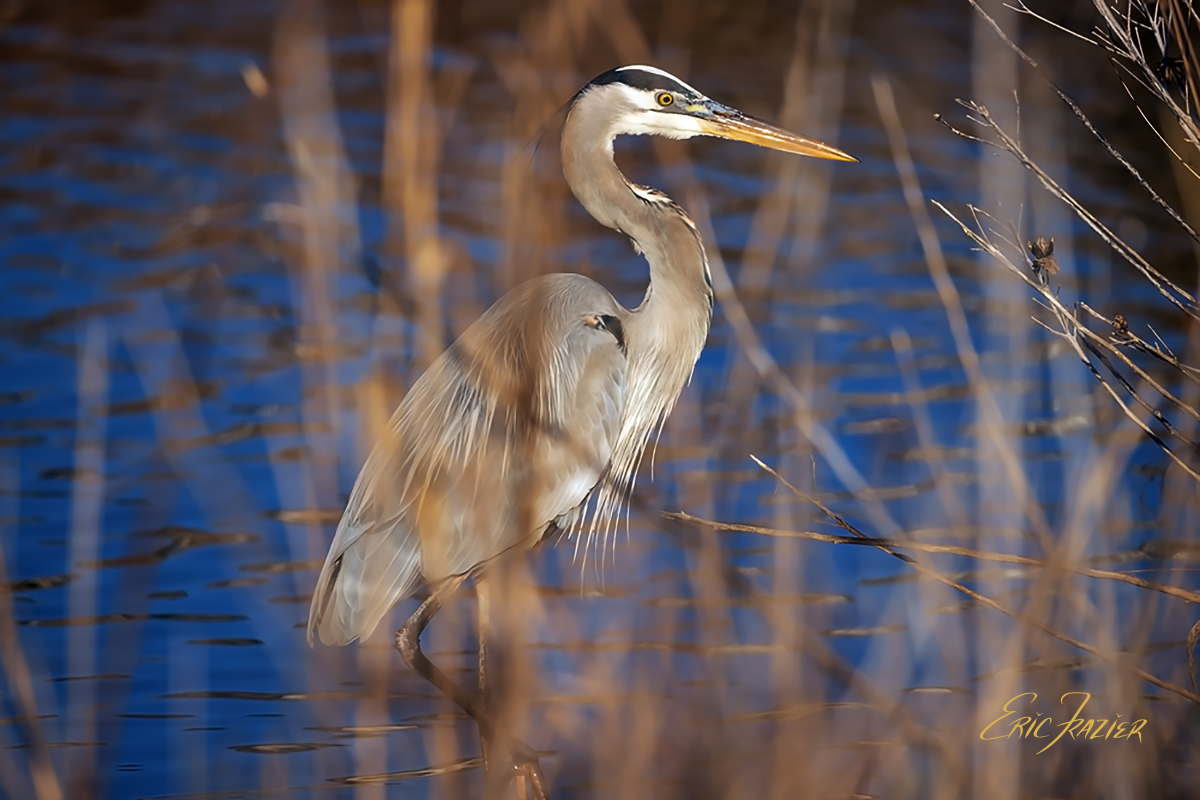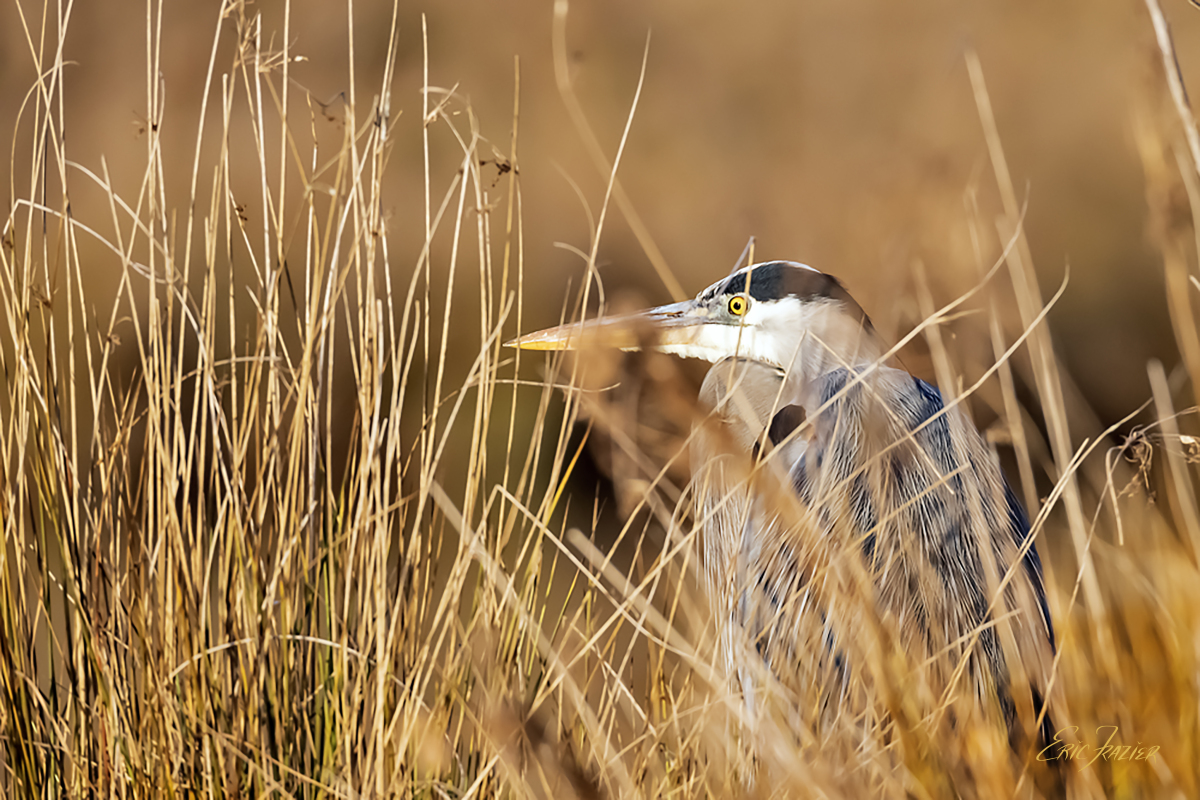If you photograph birds, you will inevitably encounter situations that require turning off autofocus to capture a subject partially obscured by limbs or weeds. Autofocus tends to resolve the nearest object, and at some distances, twisting the lens ring to override it becomes a game of tug-of-war. I prefer to simply switch it off on my lens and focus manually.
Whenever this happens, I recall the Star Wars scene where Luke Skywalker is piloting his X-wing fighter toward the target on the Death Star. With imperial fighters on his tail, Luke must decide whether to rely on his auto-targeting system—made less reliable by his evasive maneuvers, or use “the force”—a metaphysical power available to Jedi masters.
Manually focusing on a heron moving slowly behind weeds (themselves often swaying in the wind) can indeed feel like trying to master an ethereal force. When it works, it feels a bit magical.

Autofocus, autopilot, and other auto- things are irresistible inventions. I’m unlikely to capture a decent photo of a bird in flight without autofocus. But we soon (and perhaps inevitably) surrender a bit of personal agency with each labor-saving device or technology.
Today, we’re totally acclimated to remote control, and it has become a two-way street. Our devices, apps and networks—tech in general—seem often to be remotely controlling us. We fear missing out. We reach for the phone. New notifications lure us in. We find ourselves scrolling again—autoscrolling.
My resolution for 2025 is to apply my autofocus lesson to other areas. To be more aware when I’m living on “automatic,” and when possible, to turn it off. For me, that starts with less scrolling, less TV, more reading, and more travel. Focusing on the subject, not the weeds.



